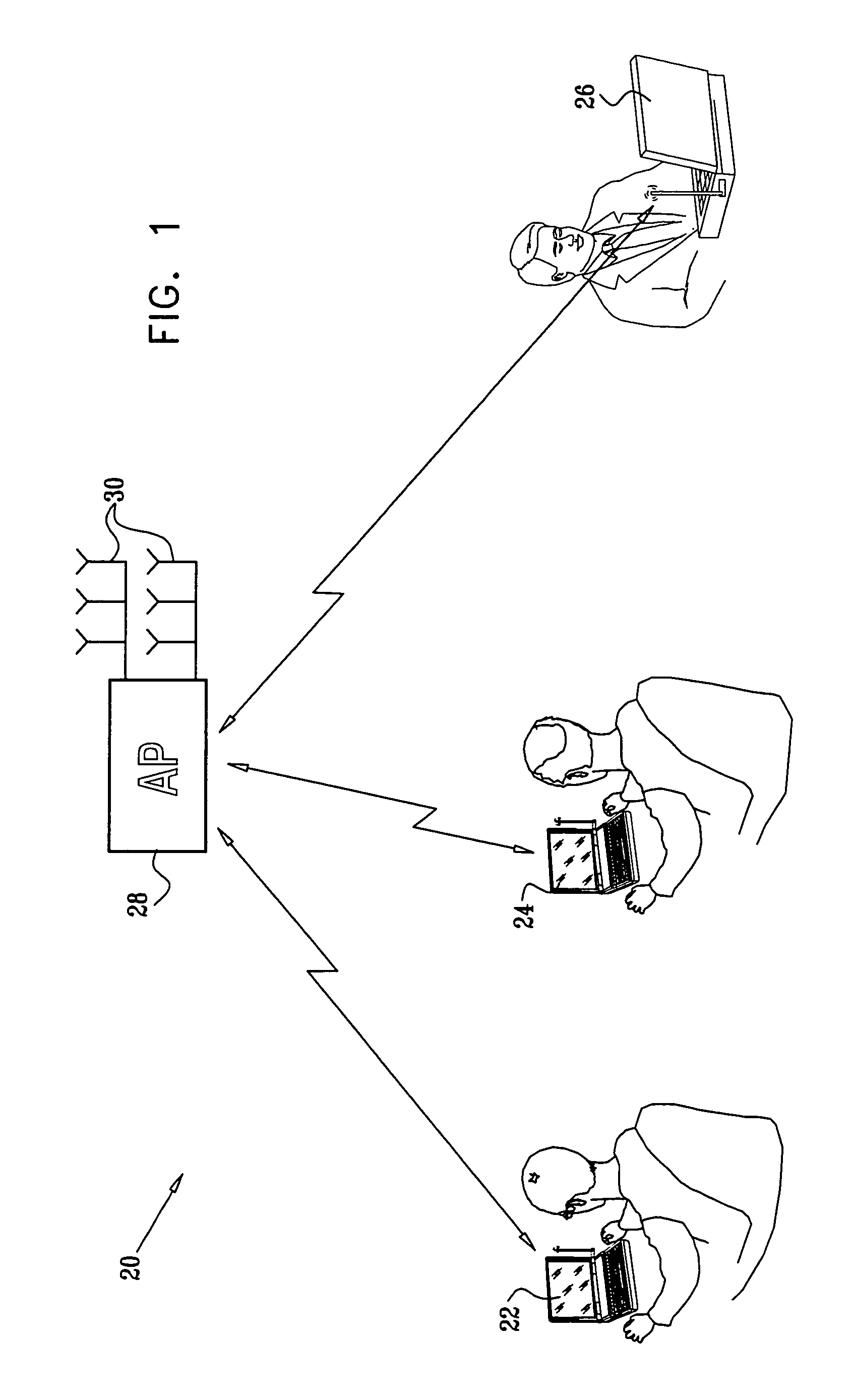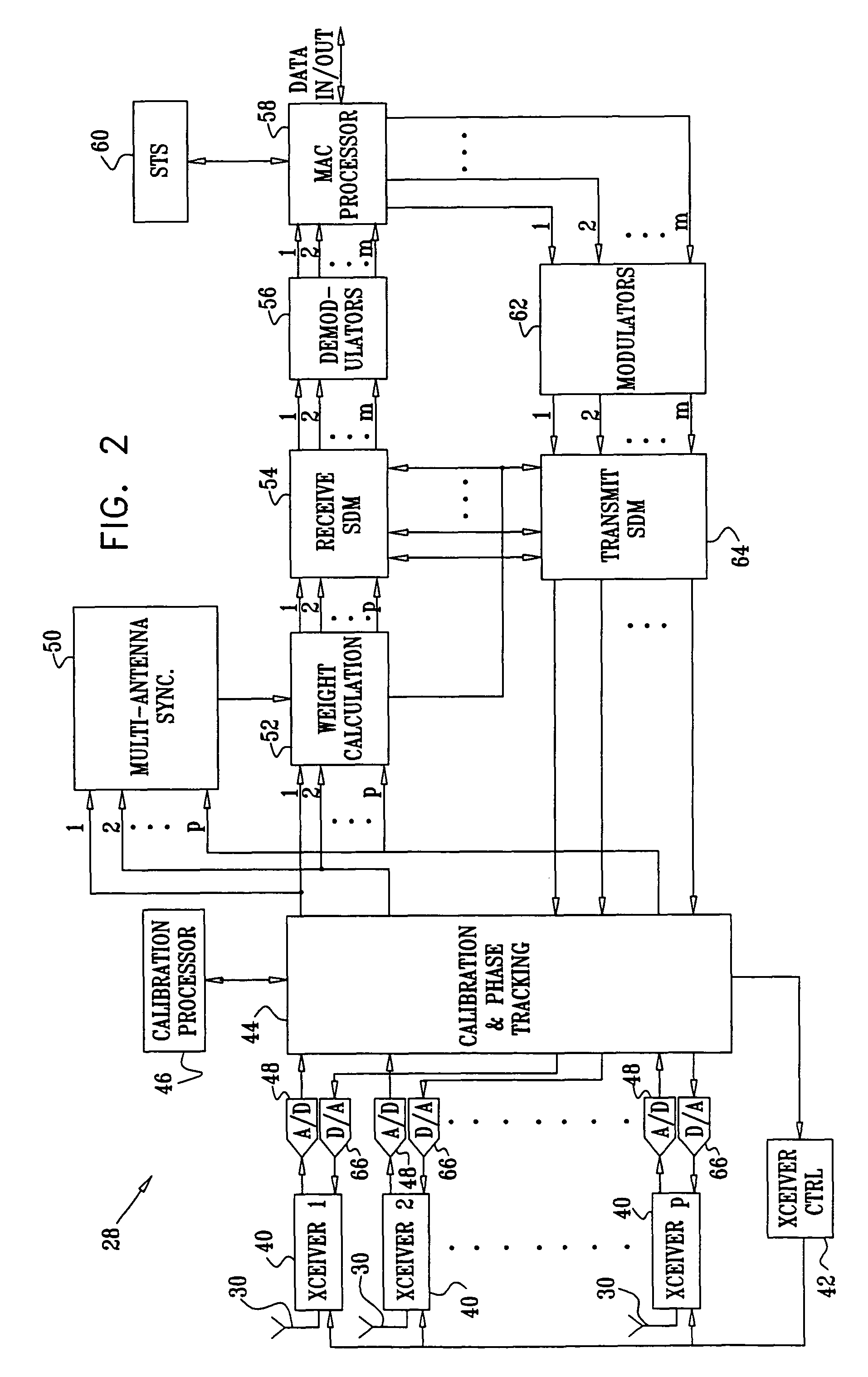WLAN capacity enhancement using SDM
a technology of sdm and wlan, applied in the field of wireless local area network performance improvement, can solve problems such as inability to decode, and achieve the effects of enhancing the capacity of a wlan, suppressing interference from other signals, and maximizing signal power
- Summary
- Abstract
- Description
- Claims
- Application Information
AI Technical Summary
Benefits of technology
Problems solved by technology
Method used
Image
Examples
example 1
Setting Second Order SDM Rate for a Specific Station
[0303]The initial second order SDM working point offset is set to 87 dB. A signal from a station is received, and its measured beamformed power is −76 dBm. The measured power is converted to table index by adding the working point offset (WPO) to the measured power. Hence, the table index is −76+87=11. The initial rate to be used for transmission to this station in a second order SMG is therefore equal to 12 Mbps, as given by in the middle column of Table I.
example 2
Working Point Adjustment for Second Order SDM
[0304]In this example, the decrementation threshold dec_thresh is set to 20%, and the decrementation correction factor dec_correct_factor is set to 5 dB. Continuing from the previous example, at a certain time, the number of failing second order SDM transmissions is found to be 41 out of 200 trials (for the entire system, rather than a specific station). Thus, the ratio of failures to total trials, M / N, is above the determined threshold. In this case, WPO is decreased by 5 dB, after which the new second order SDM offset becomes 87 dB−5 dB=82 dB. Once again, a station is received with measured beamformed power equal to −76 dBm. Converting measured power to table index gives −76+82=6, so that the rate for the next transmission to this station, in SDM of order 2, is decreased to 6 Mbps.
example 3
Increasing working point for second order SDM Due to Timeout
[0305]A predetermined timeout is set for each SDM order. Let the second order SDM timeout value be set to 5 min. As noted above, if the timer reaches the timeout value (at step 202 in FIG. 14) before another adjustment occurs, WPO is increased, regardless of the second order SDM performance, but only if the working point offset is found to be below the initial WPO. The incrementation correction factor inc_correct_factor is set, for example, to 2 dB.
[0306]Continuing from the previous example, we assume that very few statistics are accumulated, since second order SDM is almost not used. Therefore, the timer reaches the 5 min timeout before another working point adjustment has occurred. As a result, the WPO is increased by 2 dB, and the new WPO, for second order SDM, now becomes 82 dB+2 dB=84 dB. If a station is received with measured power equal to −76 dBm, the corresponding table index equals −76+84=8. Thus, the rate of the ...
PUM
 Login to View More
Login to View More Abstract
Description
Claims
Application Information
 Login to View More
Login to View More - R&D
- Intellectual Property
- Life Sciences
- Materials
- Tech Scout
- Unparalleled Data Quality
- Higher Quality Content
- 60% Fewer Hallucinations
Browse by: Latest US Patents, China's latest patents, Technical Efficacy Thesaurus, Application Domain, Technology Topic, Popular Technical Reports.
© 2025 PatSnap. All rights reserved.Legal|Privacy policy|Modern Slavery Act Transparency Statement|Sitemap|About US| Contact US: help@patsnap.com



